The post NASA’s Webb Telescope Spots Galaxies Merging Around ‘Monster’ Black Hole first appeared on Joggingvideo.com.
]]>
Now that we have a powerful lens pointed toward the deepest regions of the universe at all times, our definition of “surprise” has slightly altered when it comes to astronomy pics.
It’s no longer surprising, really, when NASA’s James Webb Space Telescope reveals yet another brilliant, ancient piece of the cosmos. At this point, we know to expect nothing less from the trailblazing machine.
Instead, whenever the telescope sends back a jaw-dropping space image, it now elicits more of a “JWST strikes again” feeling. And still, our jaws legitimately drop every single time.
This sort of dissonant version of “surprise” has happened yet again — to a pretty extreme degree. Last week, scientists presented the JWST’s brilliant view of a galaxy cluster merging around a massive black hole that houses a rare quasar — aka an incomprehensibly bright jet of light spewing from the void’s chaotic center.
There’s a lot going on here, I know. But the team behind the find thinks it could escalate even further.
“We think something dramatic is about to happen in these systems,” Andrey Vayner, a Johns Hopkins astronomer and co-author of a study about the scene soon to be published in the Astrophysical Journal Letters, said in a statement. For now, you can check out a detailed outline of the discovery in a paper published on arXiv.


An artist’s concept of a galaxy with a brilliant quasar at its center.
NASA, ESA and J. Olmsted (STScI)
Especially fascinating about this portrait is that the quasar at hand is considered an “extremely red” quasar, which means it’s super far away from us and therefore physically rooted in a primitive region of space that falls near the beginning of time.
In essence, because it takes time for light to travel through space, every stream of cosmic light that reaches our eyes and our machines is seen as it was long ago. Even moonlight takes about 1.3 seconds to reach Earth, so when we peer up at the moon, we’re seeing it 1.3 seconds in the past.
More specifically with this quasar, scientists believe it took about 11.5 billion years for the object’s light to reach Earth, meaning we’re seeing it as it was 11.5 billion years ago. This also makes it, according to the team, one of the most powerful of its kind observed from such a gargantuan distance (11.5 billion light-years away, that is).
“The galaxy is at this perfect moment in its lifetime, about to transform and look entirely different in a few billion years,” Vayner said of the realm in which the quasar is anchored.
Analyzing a galactic rarity
In the colorful image provided by Vayner and fellow researchers, we’re looking at several things.
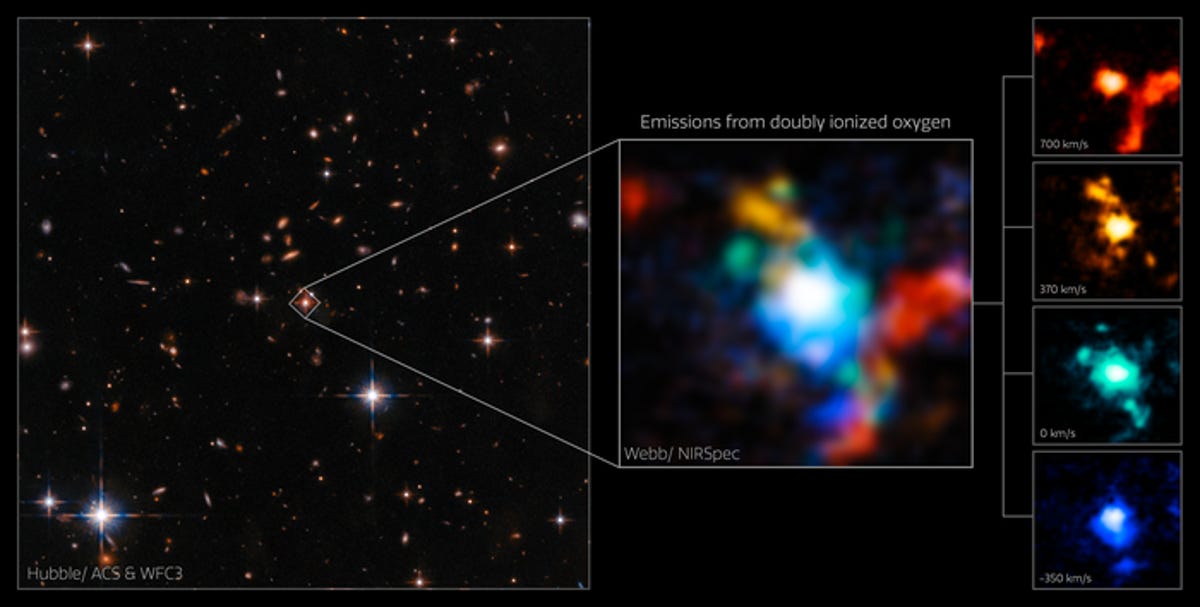
 Enlarge Image
Enlarge ImageEach color in this image represents material moving at a different velocity.
ESA/Webb, NASA & CSA, D. Wylezalek, A. Vayner & the Q3D Team, N. Zakamska
On the left is a Hubble Space Telescope view of the region studied by the team, and in the middle is a blown-up version of the spot that the JWST zeroed-in on. Glance to the far right of this image, where four individually color-coded boxes are seen and you’ll be analyzing different aspects of the JWST data broken down by velocity.
Red stuff is moving away from us and blue toward us, for instance.
This classification shows us how each of the galaxies involved in the spectacular merger are behaving — including the one that holds the extreme black hole and accompanying red quasar, which is, in fact, the only one the team expected to uncover with NASA’s multibillion dollar instrument.
“What you see here is only a small subset of what’s in the data set,” Nadia L. Zakamska, a Johns Hopkins astrophysicist and co-author of the study, said in a statement. “There’s just too much going on here so we first highlighted what really is the biggest surprise. Every blob here is a baby galaxy merging into this mommy galaxy and the colors are different velocities and the whole thing is moving in an extremely complicated way.”
Now, Zakamska says, the team will start to untangle the motions and enhance our view to an even greater extent. Already, though, we’re looking at information far more incredible than the team expected to begin with. Hubble and the Gemini-North telescope previously showed the possibility of a transitioning galaxy but definitely didn’t hint at the swarm we can see with the JWST’s awesome infrared equipment.
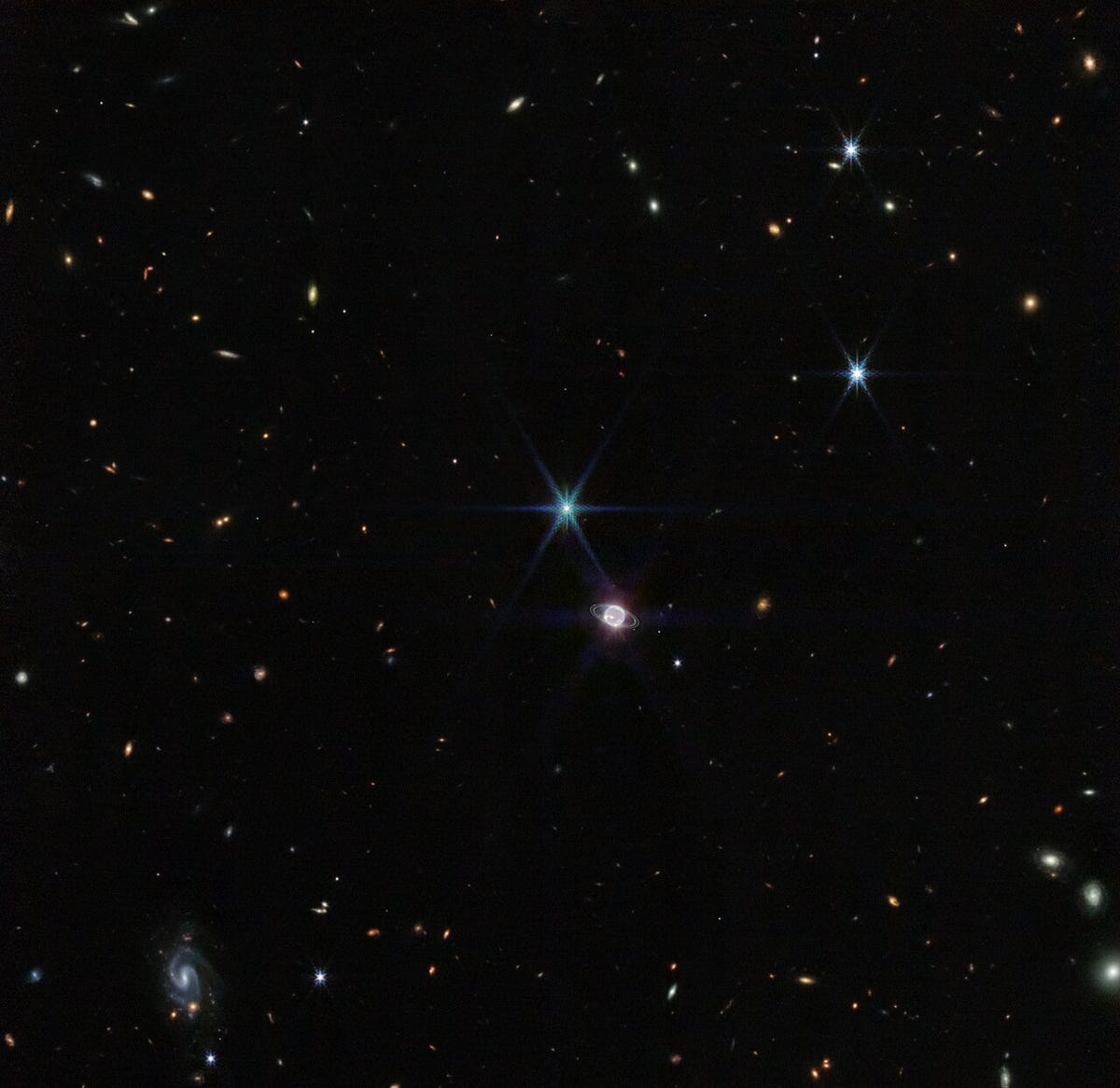

In another spectacular image taken by Webb’s Near-Infrared Camera (NIRCam), a smattering of hundreds of background galaxies, varying in size and shape, appear alongside the Neptune system.
ESA
“With previous images, we thought we saw hints that the galaxy was possibly interacting with other galaxies on the path to merger because their shapes get distorted in the process,” Zakamska said. “But after we got the Webb data, I was like, ‘I have no idea what we’re even looking at here, what is all this stuff!’ We spent several weeks just staring and staring at these images.”
Soon enough, it became clear that the JWST was showing us at least three separate galaxies moving incredibly fast, the team said. They even believe this could mark one of the densest known areas of galaxy formation in the early universe.
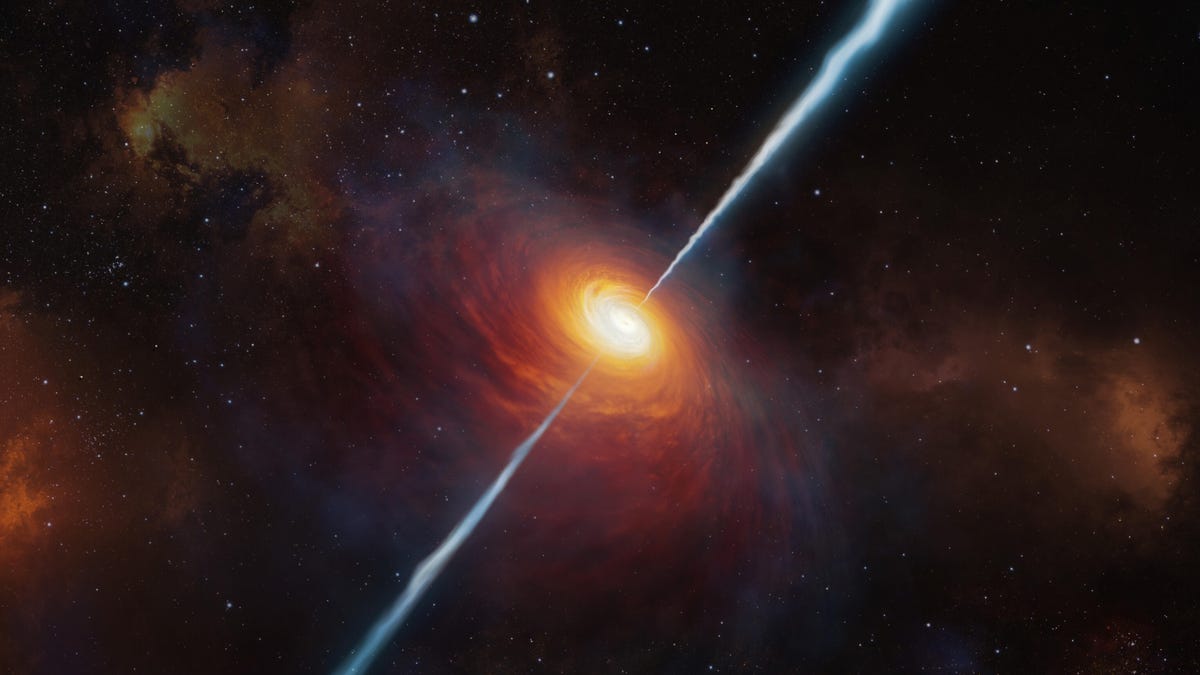

An artistic impression of the quasar P172+18, which is associated with a black hole 300 times more massive than the sun.
ESO/M. Kornmesser
Everything about this complex image is mesmerizing. We have the black hole, that Zakamska calls a “monster,” a highly rare jet of light being spit from that black hole and a gaggle of galaxies on a collision course — all seen as they were billions of years in the past.
So, dare I say it? The JWST strikes again, offering us an exceedingly precious cosmic vignette. Cue, jaw drop.
The post NASA’s Webb Telescope Spots Galaxies Merging Around ‘Monster’ Black Hole first appeared on Joggingvideo.com.
]]>The post NASA Enhances Webb Space Telescope Images With X first appeared on Joggingvideo.com.
]]>
NASA’s multibillion-dollar James Webb Space Telescope reached its gravitational safe space a million miles from Earth in January. It began taking our breath away in July.
One by one, astonishing vignettes of a glimmering universe started decking our screens, each image somehow more thought-provoking and beautiful than the last. However, I’d argue the telescope’s seminal masterpieces will always occupy a special corner of our hearts.
Toffee-hued cliffs of the Carina Nebula and fairy-dusted galaxies of Stephan’s Quintet are ever ingrained as the JWST’s first dance with deep space, and our first dance with the JWST. That said, thanks to data collected by NASA’s Chandra X-ray Observatory, the agency managed to enhance some of those brilliant JWST starter pics.
With positively electrifying results.
Behold, a new and improved version of the JWST’s Carina Nebula, Stephan’s Quintet, and deep field SMACS 0723.3–7327 from image set No. 1, as well as an updated iteration of the slightly more recent Cartwheel Galaxy portrait.
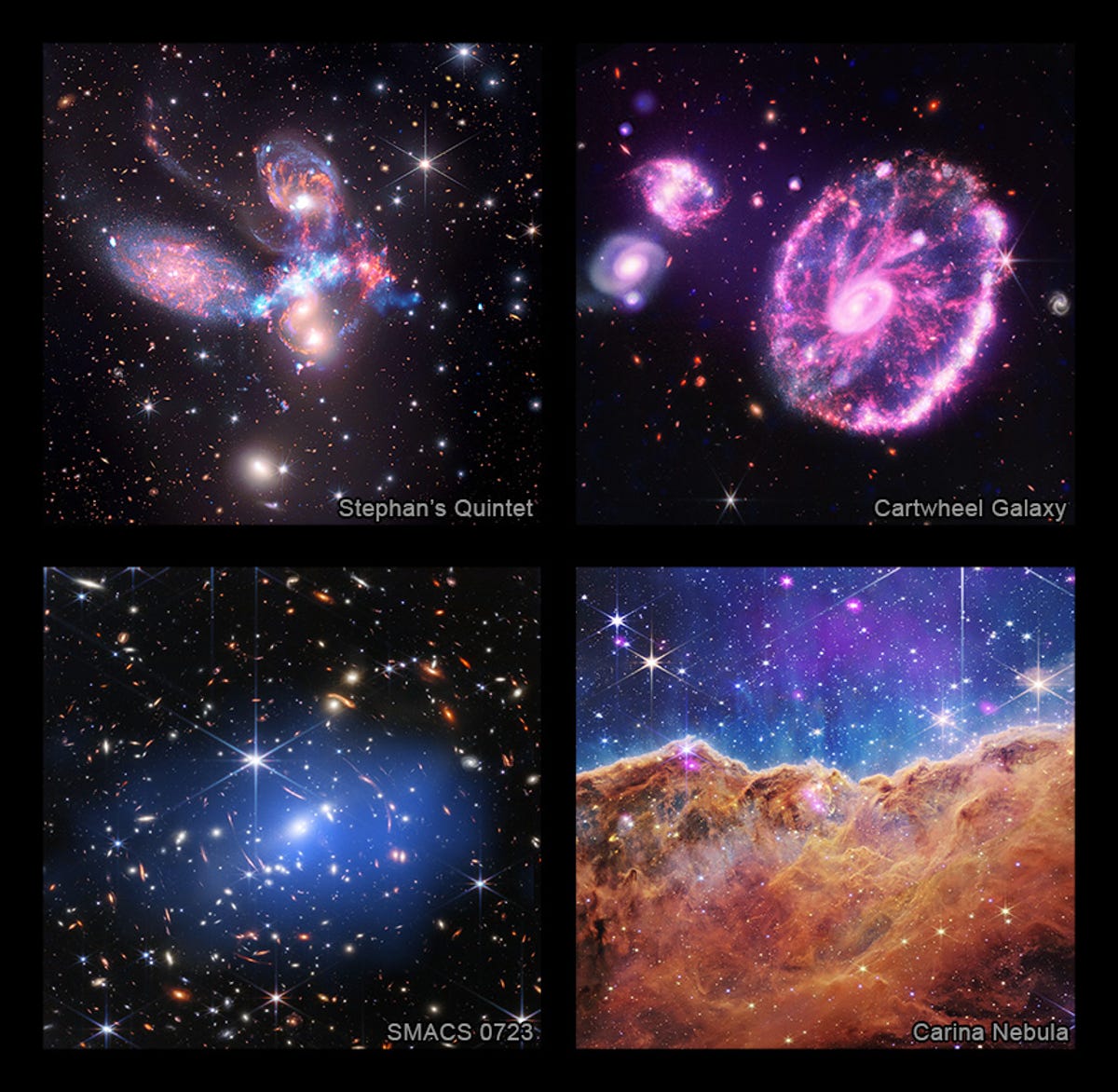

These are the four composite images NASA created with both JWST and Chandra X-ray data.
NASA/CXC/SAO/ESA/CSA/STScI/JPL-Caltech
Breaking down JWST pics 2.0
On July 11, President Joe Biden presented humanity with its first JWST treasure, informally dubbed Webb’s First Deep Field (and formally known by its robot name, SMACS 0723.3-7327).
Let’s zoom in to the 2.0 of this sparkly exhibition first.
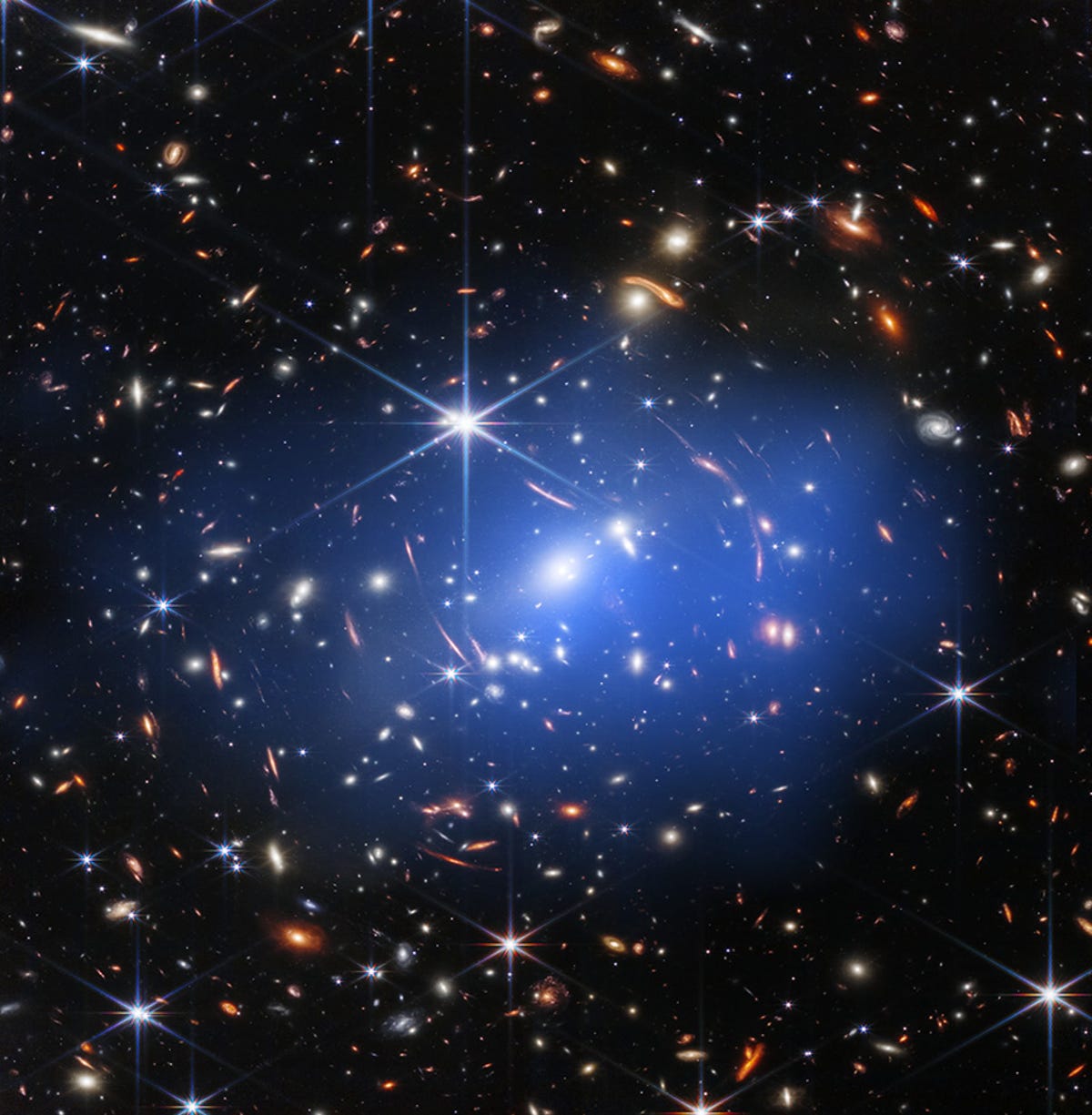

A composite image of SMACS 0723.3-7327.
NASA/CXC/SAO/ESA/CSA/STScI
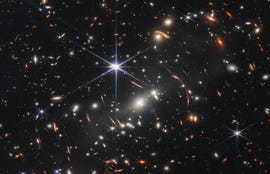
 Enlarge Image
Enlarge ImageWebb’s First Deep Field with only JWST observations.
NASA, ESA, CSA, and STScI
When I laid eyes on this deep field for the first time — after NASA’s obscenely long delay in unveiling it, a wait weirdly scored by ambient chillhouse music — my jaw dropped like one of those comic book cartoon animals.
These aren’t stars you’re looking at; they’re galaxies located about 4.2 billion light-years away.
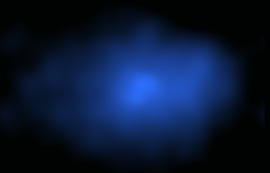
 Enlarge Image
Enlarge ImageThe same deep field with just Chandra observations.
NASA/CXC/SAO
Warped streaks at the center of the image are the result of extensive gravitational lensing, a phenomena predicted by Einstein’s general relativity and therefore visual proof of the mind-bending principle.
Shown as a blue haze diffusing from the middle of the image, this gas reaches tens of millions of degrees Celsius and has a staggering mass of about 100 trillion times that of the sun. NASA even estimates the gas reservoir to be several times more massive than every galaxy in this cluster.
In a way, realizing the size of this region forces you to think about how deep this deep field really goes.
Next up is Stephan’s Quintet, a gaggle of five galactic realms, four strung together by their gravitational auras.
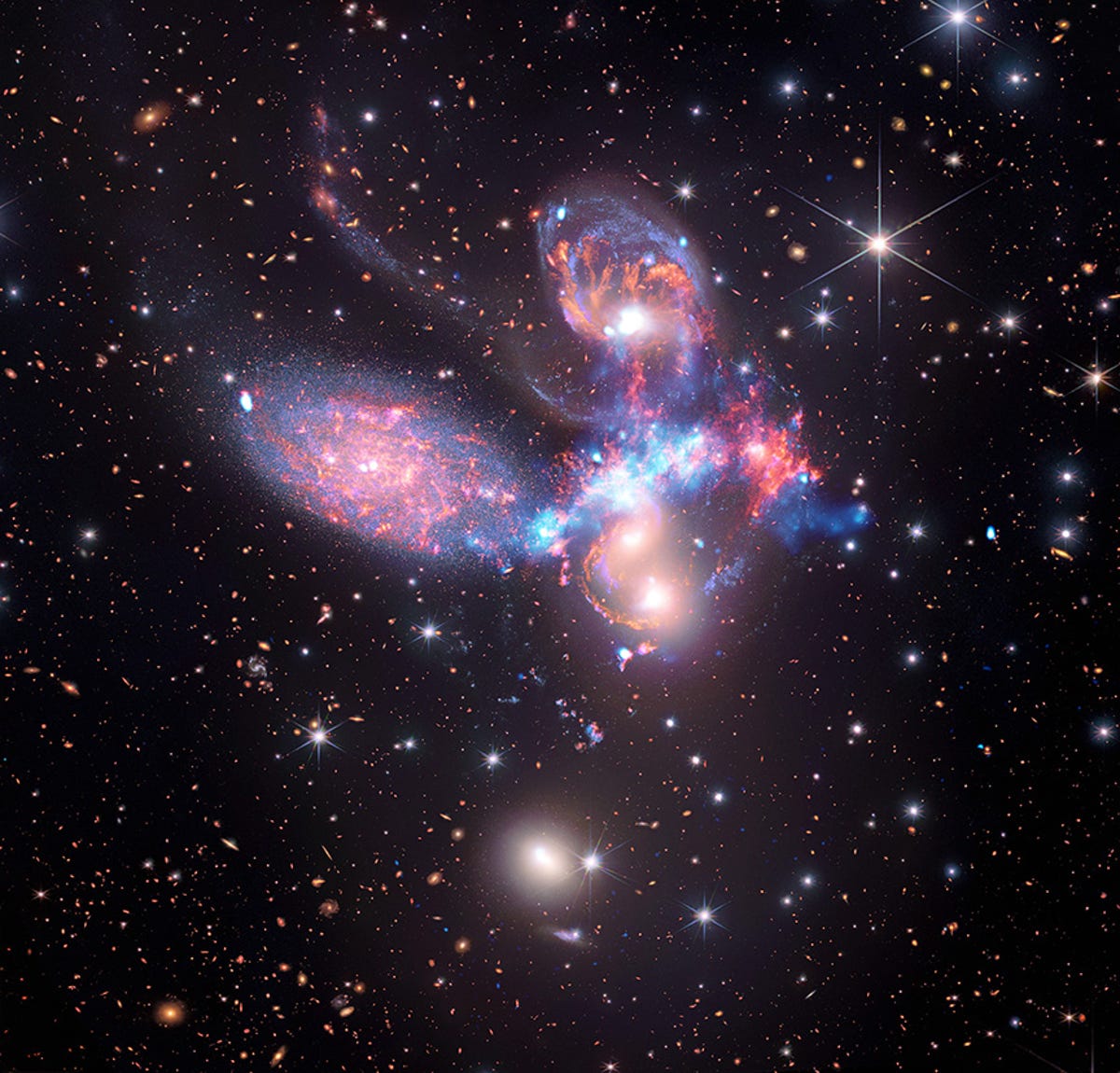

A composite image of Stephan’s Quintet, made with both JWST infrared and Chandra X-ray data.
NASA/CXC/SAO/ESA/CSA/STScI

 Enlarge Image
Enlarge ImageStephan’s Quintet with only JWST observations.
NASA/ESA/CSA/STScI
JWST data shows up in this picture as red, orange, yellow, green and blue streaks, NASA said. Coded in these shades, you can see galactic trails of gas and growing baby stars speckling the dark background of space.
But the piercing baby blue highlight at the galactic intersection, right at the center of this image, comes from Chandra X-ray data.
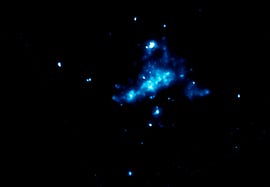
 Enlarge Image
Enlarge ImageStephan’s Quintet with only Chandra observations.
NASA/CXC/SAO
The observatory found a shockwave that heats gas to tens of millions of degrees, NASA explains, exuded as one of the galaxies passes through another with a speed of 2 million miles per hour. The agency also points out some data taken by NASA’s now-retired Spitzer Space Telescope in red, green and blue — infrared information like the kind the JWST works with.
Next, the Carina Nebula.
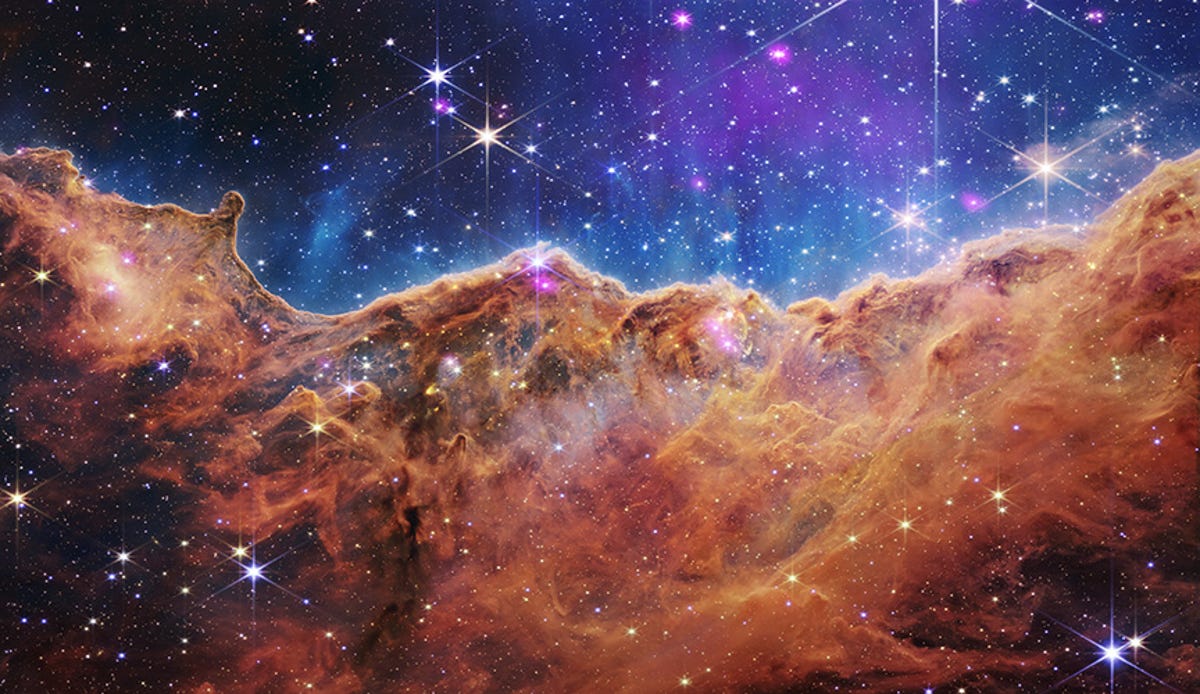

A composite image of the Carina Nebula, made with JWST and Chandra data.
NASA/CXC/SAO/ESA/CSA/STScI

 Enlarge Image
Enlarge ImageCarina Nebula with only the JWST’s infrared lens.
NASA/ESA/CSA/STScI
As a science writer, it never ceases to make me smile when I tell someone about my job in our post-JWST-launch world and they immediately reach to show me their JWST iPhone background. Or, at least a saved picture from the ‘scope in their camera roll. Some choose the deep-field drama for phone wallpaper (like me) but I’d say the favorite is JWST’s Carina Nebula masterpiece.

 Enlarge Image
Enlarge ImageCarina Nebula with only Chandra X-ray observations.
NASA/CXC/SAO
The Carina Nebula is a star factory, basically, where flaming balls of gas are either being born or waiting to die, and this image is a zoomed-in section of it. Data from the JWST pretty much makes up the backbone of this portrait — the melty-looking, red-orange landscape and indigo region that looks like a “sky.” It’s not a sky, to be clear. It’s not even blue in real life — space images are typically colorized for science reasons.
“These are mostly stars located in the outer region of a star cluster in the Carina Nebula with ages between 1 and 2 million years old, which is very young in stellar terms,” NASA said.
And Chandra’s contribution here is how bright each star looks, NASA said.
Young stars, per the agency, are much brighter in X-rays than old stars. This also means X-rays can help us tell whether there are any Milky Way galaxy stars present in this picture, simply because they fall along the line of the JWST’s vision.
“The diffuse X-ray emission in the top half of the image likely comes from hot gas from the three hottest, most massive stars in the star cluster. They are all outside the field of view of the Webb image,” NASA said.
Last but not least, the Cartwheel Galaxy.
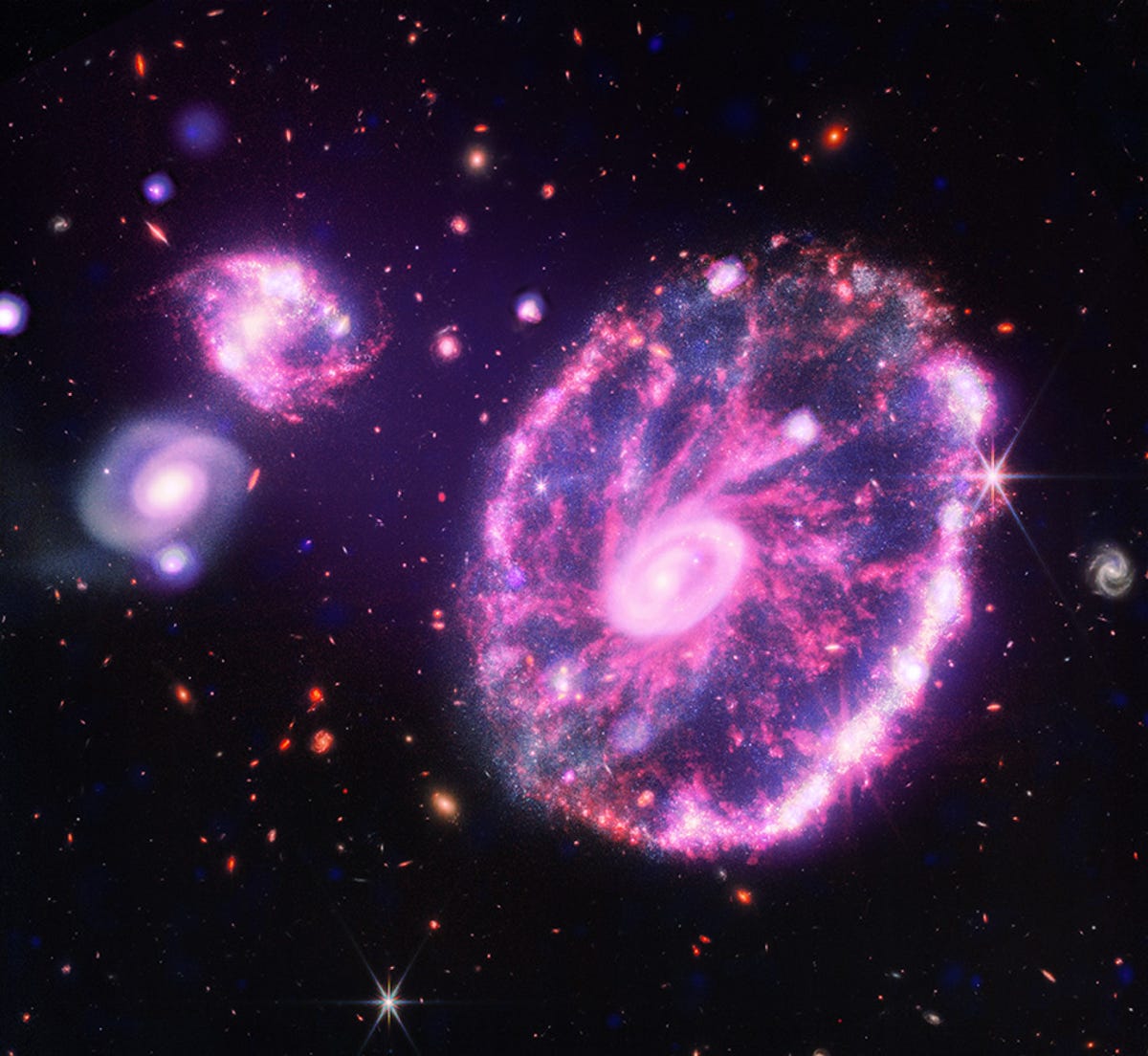

A composite image of the Cartwheel Galaxy made with both JWST infrared and Chandra X-ray observations.
NASA/CXC/SAO/ESA/CSA/STScI
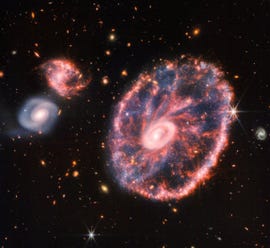
 Enlarge Image
Enlarge ImageA purely JWST view of the Cartwheel Galaxy.
NASA/ESA/CSA/STScI
The JWST’s Cartwheel Galaxy’s image came out just under a month after the other three we’ve discussed, but its reception was just as spritely. It’s easy to see why. I mean, it looks like a cosmic, glow-in-the-dark ferris wheel. That shape, per NASA, is thanks to a collision it had some 100 million years ago with a smaller galaxy, serendipitously the same crash that spurred this realm to begin forming stars.
Again, the JWST’s original image serves as the structure of this image, the blue and purple areas come from Chandra observations of superheated gas, individual exploded stars, neutron stars and even black holes pulling material from companion stars.
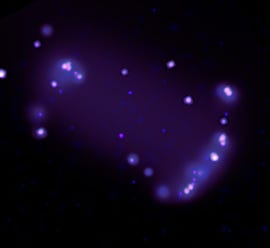
 Enlarge Image
Enlarge ImageCartwheel Galaxy, as seen through the lens of the Chandra X-ray Observatory.
NASA/CXC/SAO
But beyond offering us yet another stunning lens on the universe, the collaboration between NASA’s JWST and Chandra Observatory sets an important message in stone.
“Webb … will not pursue its exploration of the universe on its own,” NASA said. “It is designed to work in concert with NASA’s many other telescopes as well as facilities both in space and on the ground.”
In fact, elsewhere in the higher dimension of telescope collabs, the JWST worked with Hubble to present us with an ethereal view of a dusty galactic pair.
Perhaps one day, all our powerful telescopes’ images will be overlain to show us the universe in its purest form.
The post NASA Enhances Webb Space Telescope Images With X first appeared on Joggingvideo.com.
]]>